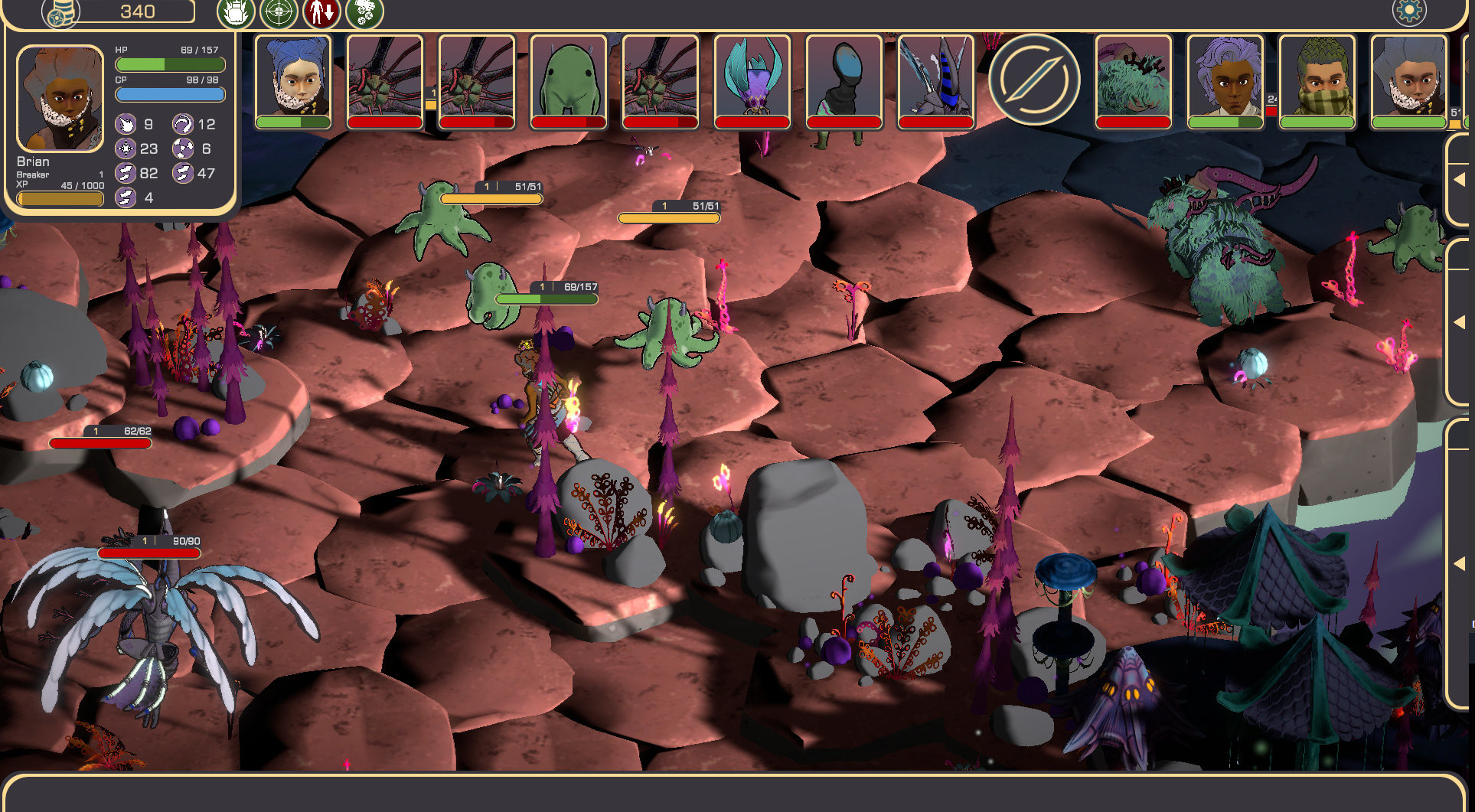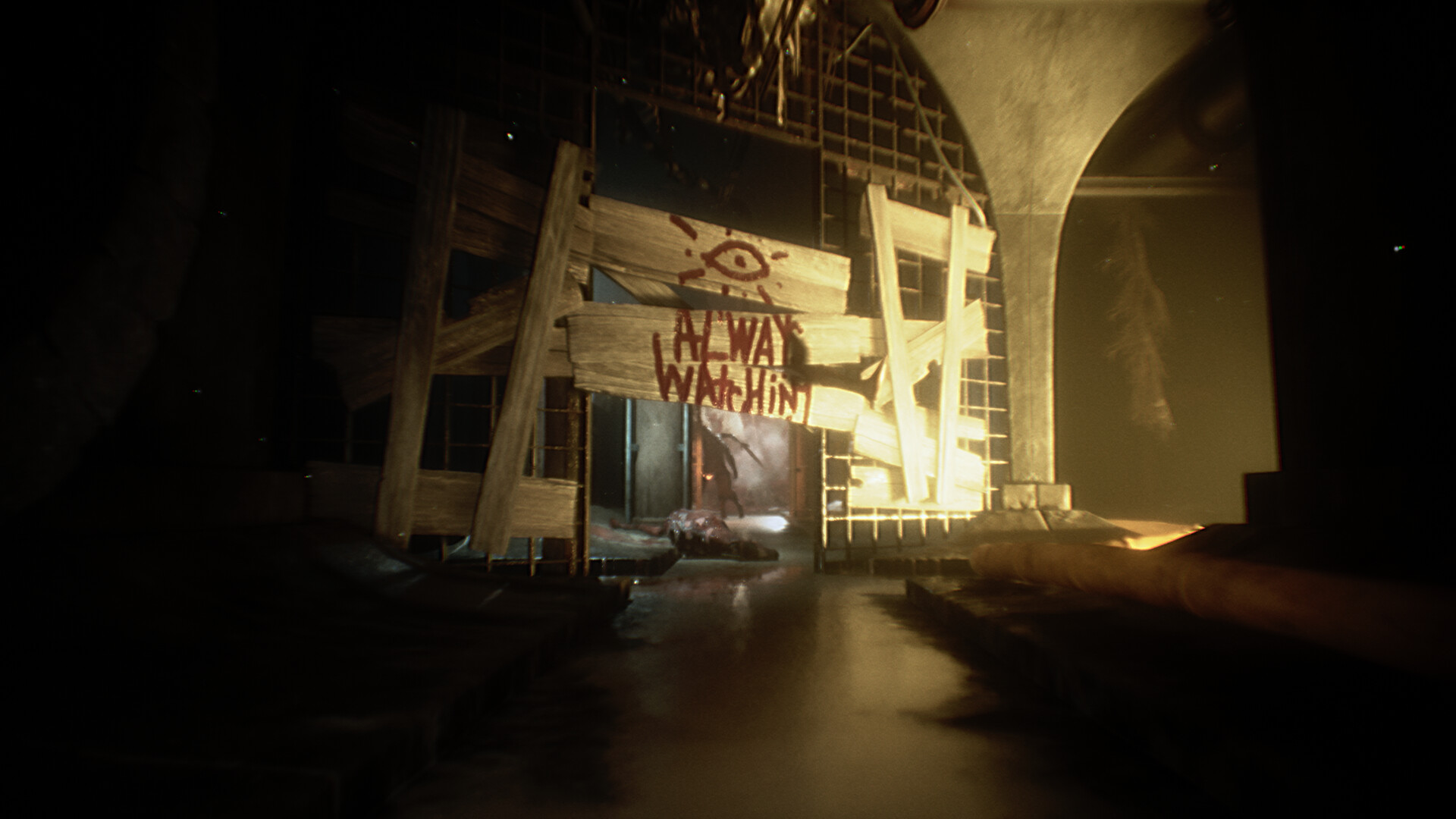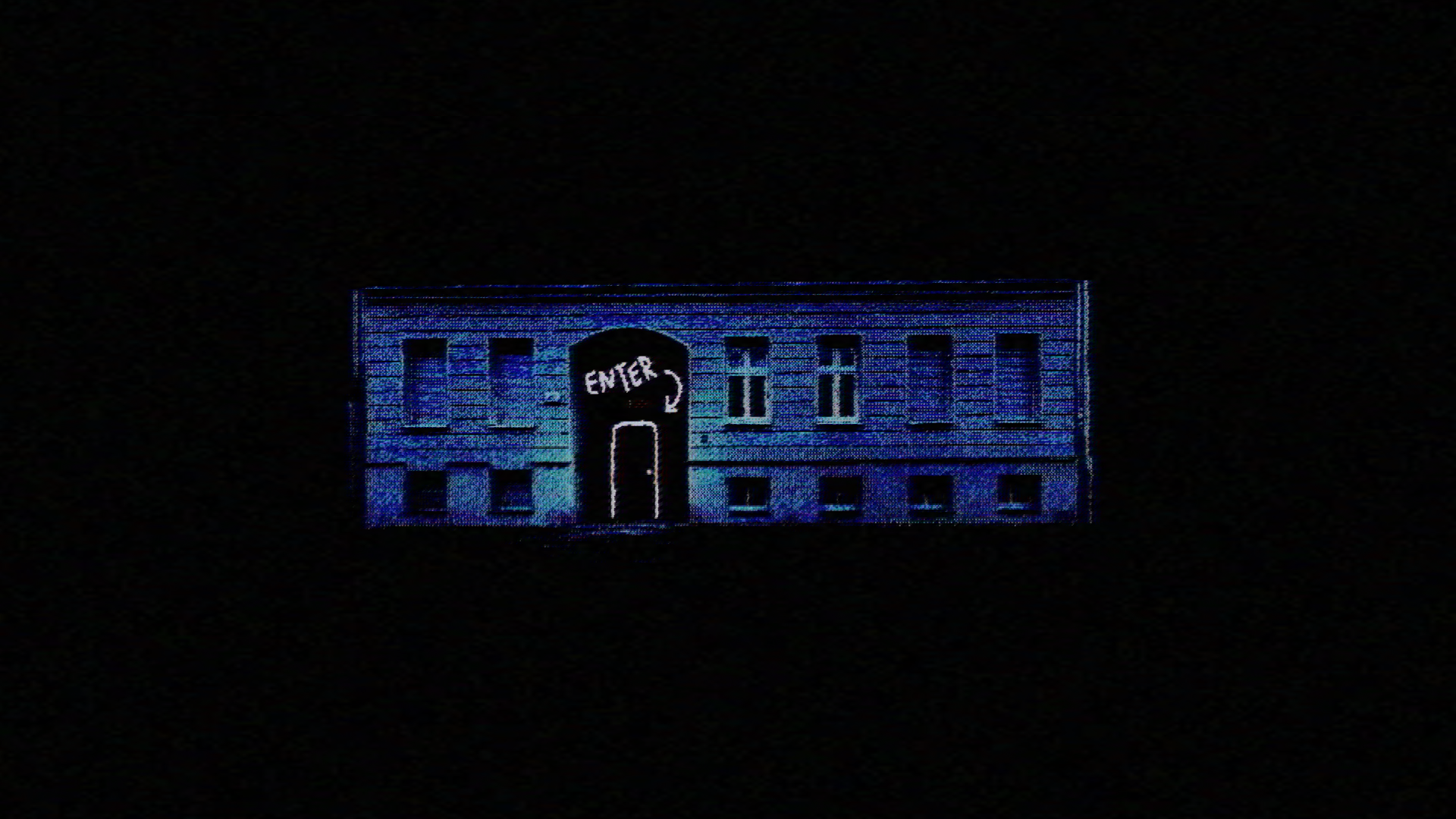
Into Developer Minds: An Interview With Chris Wright On Grim Tranquility
Welcome back to Into Developer Minds, a column where I interview different indie game developers about their latest projects and creative process! Today we’re looking at Grim Tranquility.
It goes without saying that after years of environmental damage done to our planet, Earth is in pretty rough shape. With corporations continuing to pump toxic chemicals into the air, ocean, and land, it is not only terrifying to see what is happening to the world but to imagine what may come of it down the road.
Grim Tranquility, the upcoming title from Poorly Timed Games, takes a look at what that future could be like (in a very fantastical way). The game incorporates turn-based combat with RPG elements, offering compelling exploration through its narrative. Per the game’s description on Steam:
“Humans have ruined Earth’s ecology after years of denying scientific truths, and now search for a new home among the stars. Hostile aliens force us to confront the mistakes that led us here. Explore alien worlds as humanity searches for a new home in this sci-fi, roguelite, tactics-based adventure.”
Chris Wright is the CEO of Poorly Timed Games; prior to his time at the small indie studio, Wright worked for Bungie and Blizzard. For this installment of Into Developer Minds, I asked Wright about his background in game design, as well as the creative process and work his team has put into Grim Tranquility.

Michael Pementel: Where did your journey with gaming begin? What were some of your favorite games growing up (for fun and those that would go on to inspire you)?
Chris Wright: When I was growing up, my dad bought us a Commodore 64. My younger siblings were a bit young then, so it was really just mine and my dad’s for a few years.
I played a lot of the classic games then like River Raid, Battle Zone, Choplifter, Pole Position, and Grand Prix Simulator.
I played a lot of platformers – they were big on consoles, of course – and got really good at Super Mario Brothers 3. There was a contest with it at my local Wal-Mart – whoever could get the highest score in some small period of time would get a $50 gift card. I ended up chasing that score as often as I could get a ride there and ended up winning, which I used to buy my copy of the first Final Fantasy.
For me that game was a revelation and was one of the first games that made me dream of being a game developer. As it happens, the series is still one of my absolute favorites.
MP: What ended up driving you towards game design?
CW: I’ve actually been in QA and QA management for most of my career in both tech and game dev. I dabbled in design while in school at DigiPen Institute of Technology, but this was my first professional experience.
I think many of us who have been in the industry for a while have other interests beyond what our day job is, so it has been really fun to be able to flex those muscles and explore a project that’s been wholly different than most of what I’ve spent my career doing.
Ultimately two things made me leave Bungie to try my hand at my own project:
1 – I wanted to make a game with more authentic representation in it. Games are doing better lately in showing more POC and LGBTQIA characters, but sometimes it is hollow representation; that is, they’re characters supposed to represent us, but often don’t have fleshed out backgrounds. I think we can (and should) do better. Everyone deserves to see themselves represented and that was something I wanted to take a stab at.
2 – After 11 years in the game industry on the test side of things, I did want to get into design. My only real experience was in school, where the team projects I designed got a good bit of internal acclaim. The idea to merge a tactical RPG with elements of roguelite [sic] gameplay came to me pretty early in the project, which was exciting. Some of the process has definitely been learn by trying, but we’ve become a studio that is very iterative in nature, which has worked well for me.

MP: I find the title behind your upcoming game intriguing – Grim Tranquility. Can you speak a little regarding the meaning of that? How does that reflect the game?
CW: Part of it comes from the tranquility of deep space, which the remnants of humanity drift through for several generations in search of a new home. The “Grim” part shows that maybe things aren’t as tranquil or harmonious as the nomadic humans hope.
There also may be some story related bits I don’t want to spoil…
Originally the game’s name was quite different. It had to do with one of the villains and how they believe if you distract people at large, then you can do whatever you want. A bit of a nerdy response, but the Roman writer Juvenal wrote “Two things only the people anxiously desire — bread and circuses.” So the original title was Bread and Circuses. Definitely doesn’t sound as much as a game, but I think it had its own charms.
MP: Given the current and impending environmental horrors that surround us, what compelled you and your team to explore those themes in Grim Tranquility? How prominent will these themes be through the game’s narrative and play?
CW: You constantly see (a vocal minority of) people saying they don’t care about representation in games, to keep politics out of games, etc. But games are an art form that really allows for critique like this. Frankly, I don’t see much effort on any level really addressing the impending environmental horrors. Besides Greta Thunberg – who is doing a better job than virtually any national leader at driving these efforts – there doesn’t seem to be any focus. So while you see this group saying keep games apolitical, the reality is this is one of the few places we can push for change.
Given that we started the project right as a global pandemic was starting, we had a little bit of a relief valve internally. Whenever something frustrated us, we could channel it into the game. If you’ve seen the game’s trailer or teasers on Steam, you can see this environmental apocalypse play out.
We have tried to weave the themes throughout the game so they have an impact, but also don’t come off as preachy.
MP: What challenges have you all faced in creating Grim Tranquility and how have those challenges been overcome?
CW: We have been a remote studio from the start, so the pandemic didn’t slow us down in that regard. I think one thing we really took for granted is how helpful the desk walk by is. You know, the “hey let’s grab coffee or lunch” thing — it really can help figure out what someone is working through, if they’re feeling stressed or are distracted, and so on. It’s something we had to adapt to, since most of the time our group communicates in bug tracking and slack. We do have regularly Google Meetings now, but it took us a while to realize how much the voice and/or video chat helped us feel connected.
The other biggest challenge is this is my first foray into running my own studio, as well as the business development aspects. It’s been quite a challenge, but fortunately I have a supportive team that lends their expertise when possible. There are also a lot of really wonderful indies who offer help and guidance. I’ve had the fortune to meet a lot of giving and generous folks, so it’s been great to have some people to ask, though a lot of it is trial and error. But that seems to ring true for a lot of game development in general, so it doesn’t seem out of place.
MP: What is a particular part of the design process that really gets you excited? What motivates you?
CW: Playtesting is definitely the most fun part of the design process to me. It’s certainly a lot of fun to actually play an idea that your team came up with, but it’s still nothing compared to seeing others play your game.
I have been attending PAX West since the very first year at the Meydenbauer Center in Bellevue. So for me, to reveal our first game at PAX West 2021 was super exciting. By far the most fun I had was watching people play — and come back to play. It’s one thing to see people play a big IP you’ve had a small part in, but it’s another entirely to be one of a very few people on a game that you see people enjoy.

MP: Can you speak a little to the animation style of the game? It reminds me very much of a comic book – very catchy! What was the process behind choosing that style for the game?
CW: I’ve been extremely fortunate in my career in games, working at titans like Blizzard and Bungie. Both of these studios have absolutely top-notch cinematic departments, far larger and pricier than we could afford. Early on, I had the idea of doing a more comic book style for it, which our art director loved. We actually hired some comic book illustrators to help bring it to life. We have some really neat sequences – even a few with animation – which I really cannot wait to share with folks.
MP: Can you talk about or tease a little regarding what sort of RPG elements players can expect in the game? Given the narrative angle of humanity hopefully learning from past mistakes, what sort of heavy choices may players be expected to make?
CW: There are so many cool new games exploring new things out there. Hades was a huge influence on our narrative conversations. While that game was very responsive to recent events like “Oh you beat that boss for the first time, nice!” or “Oh wow, the first boss gave you trouble? Wow, are you losing your touch,” as a first game it felt like too much to try and mirror. We have described our approach as the “Consequences of Choice;” we don’t have as many choices as a Dragon Age or the responsiveness of Hades, but our story plays out quite differently depending on one or two early decisions.
We also have a character creator and hero stat development. We also have three hero classes and our Influence Wheel, which gives you random buffs and debuffs [sic] every playthrough. The exciting thing for us is that as players it really keeps us thinking. For example: getting some strong bonuses to melee attacks will change how I play significantly. It might even impact who I recruit for my team. The Influence Wheel is going to really make each iteration of the game feel a lot more dynamic.
MP: Depending on where Grim Tranquility is in its development, what lessons have you taken out of this experience? How do you think the work on this game will change your approach to design, as well as that of future titles by Poorly Timed Games?
CW: I’ve really enjoyed the world (or in our case, universe) building. This is my first experience professionally jumping into that, which has been really rewarding. We’ve got a ton of material – 150+ pages just of lore text on aliens alone! – that really has helped flesh out where everything is happening. One of the things we’ve talked about is future games can be set in the same universe, but maybe a different genre entirely. For me, seeing a game I love create “sequels” that are in the same world, but different game types or genres and focusing on different time periods is something I’d love to see more of. That’s something PTG is really interested in looking into. But for the moment we’re still focusing on Grim Tranquility, but it’s exciting to think about what the future could hold as well.
Dread XP and I would like to thank Chris for his time. At the time of this writing, Grim Tranquility is said to be released in 2022.




